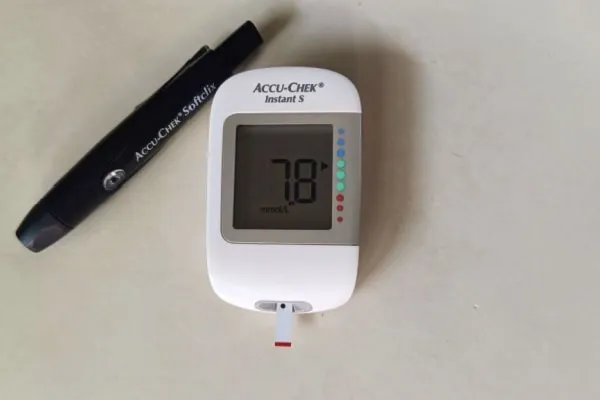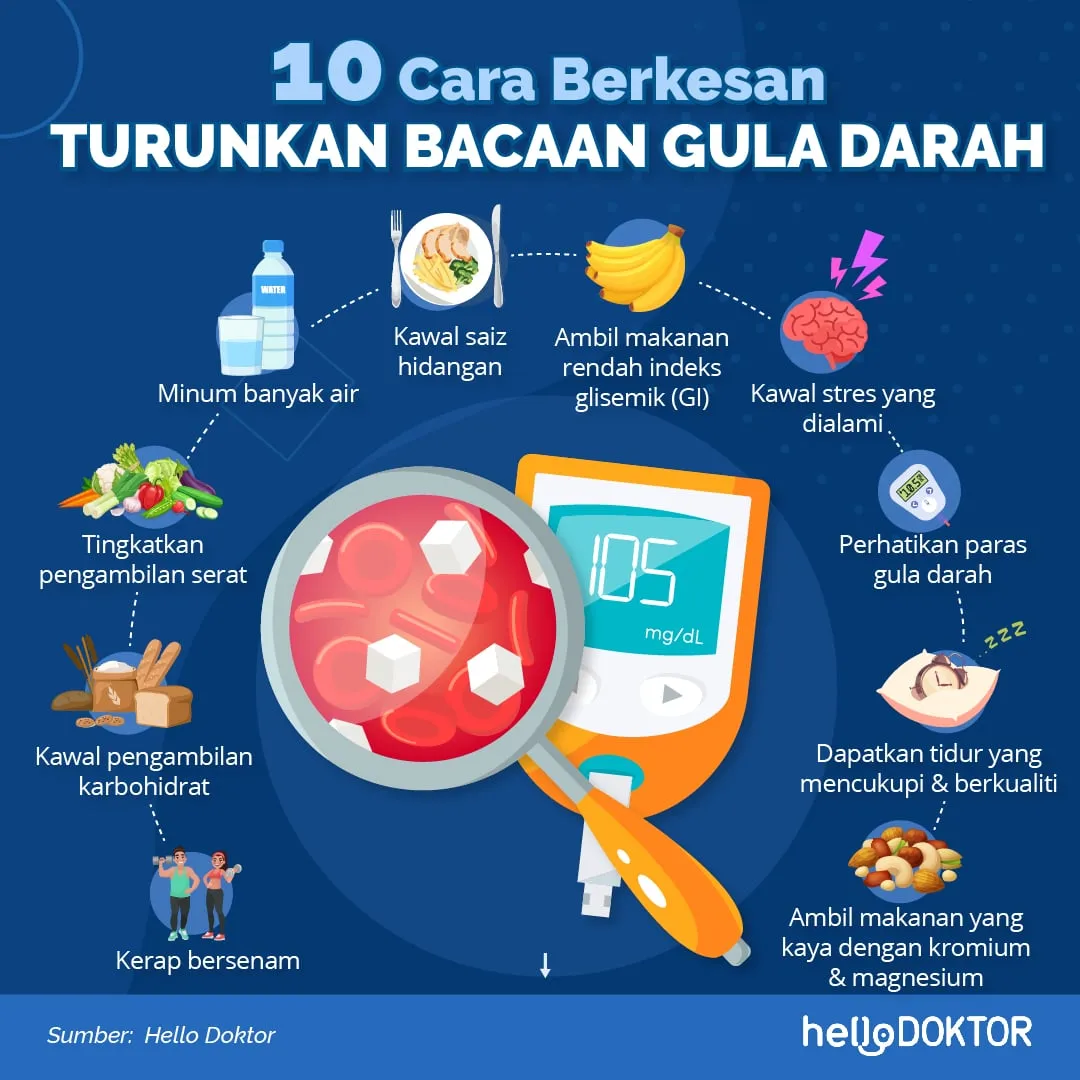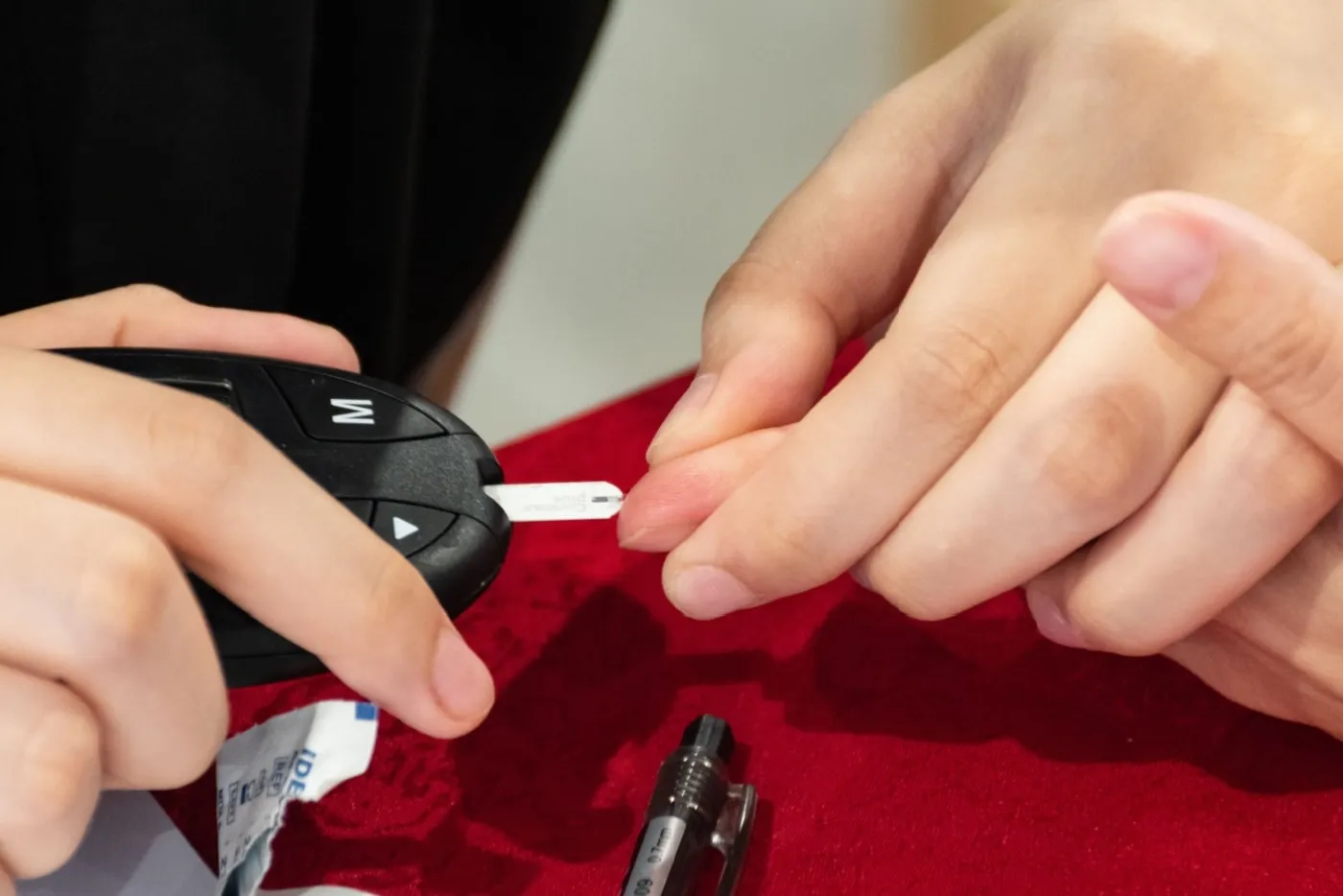Cara kawal gula dalam darah ialah langkah penting bagi pesakit diabetes supaya bacaan gula kekal stabil sepanjang hari, termasuk ketika berpuasa. Cara kawal gula dalam darah yang betul membantu badan kekal bertenaga, mengurangkan risiko komplikasi dan mengelakkan keadaan terlalu tinggi atau terlalu rendah ketika berpuasa. Sebelum beralih kepada aspek lain, kita perlu memahami dahulu realiti penyakit diabetes itu sendiri sebelum belajar mengawalnya.

Untuk mendapatkan lebih banyak informasi tentang Kencing Manis, klik di sini.
Adakah kencing manis boleh hilang?
Ramai pesakit berharap diabetes boleh hilang sepenuhnya. Dari sudut perubatan, diabetes jenis 1 tidak boleh sembuh, manakala diabetes jenis 2 boleh mencapai remission jika pesakit berjaya mengawal berat badan, makan secara sihat dan melakukan aktiviti fizikal secara konsisten.
Beberapa perkara yang boleh membantu mengawal atau menurunkan risiko komplikasi:
- Mengurangkan berat badan 5-10%
- Mengambil makanan rendah gula ringkas
- Senaman berkala seperti berjalan 30 minit sehari
- Konsisten mengambil ubat doktor
Walaupun diabetes tidak “hilang” atau sembuh, ia boleh dikawal sehingga bacaan gula normal tanpa gejala.
Bila gula darah terlalu tinggi?

Gula dianggap tinggi apabila bacaan random melebihi 11.1 mmol/L atau bacaan sebelum makan lebih daripada 7.0 mmol/L. Ketika berpuasa, peningkatan mendadak juga boleh berlaku kerana:
- Makan terlalu banyak karbohidrat ketika sahur atau berbuka
- Tidak mengambil ubat diabetes seperti biasa
- Stres, kurang tidur atau sakit
- Hormon badan yang berubah semasa tempoh berpuasa
Pesakit perlu belajar pantau perubahan badan dan tidak menunggu sehingga gejala muncul.
Kenapa gula tak turun?
Keadaan ini biasa berlaku dan bukan semata-mata kerana makan manis. Antara sebab utama kenapa gula tak turun ialah:
- Dos ubat tidak mencukupi atau tidak konsisten
- Pengambilan nasi, roti, kuih atau minuman manis berlebihan ketika berbuka
- Kurang pergerakan sepanjang hari
- Sakit jangkitan seperti demam atau luka bernanah
- Badan mengalami rintangan insulin
Jika bacaan gula tidak turun walaupun sudah berjaga-jaga, pesakit perlu semak kembali pola pemakanan dan berbincang dengan doktor mengenai pelarasan ubat.
Cara kawal gula darah: petua turunkan gula dalam darah dengan cepat

Petua ini membantu sementara, tetapi rawatan utama tetap perlu mengikut nasihat doktor:
- Minum air kosong mencukupi untuk kurangkan kepekatan gula
- Lakukan senaman ringan selepas berbuka seperti berjalan
- Elakkan makanan tinggi gula dan tepung putih
- Ambil makanan tinggi serat seperti sayur dan buah rendah GI
- Pastikan pengambilan ubat diabetes tepat waktunya
Petua turunkan gula dalam darah dengan cepat tidak menggantikan rawatan, tetapi ia membantu menstabilkan bacaan dalam masa singkat.
Cara kawal gula darah: makanan untuk menurunkan gula dalam darah
Beberapa makanan boleh membantu memperlahankan kenaikan gula:
- Oat, beras perang, roti gandum penuh
- Sayuran hijau seperti bayam, brokoli dan sawi
- Ikan berlemak seperti salmon dan kembung
- Buah rendah GI seperti beri, epal dan pir
- Kekacang dan bijian seperti badam dan chia seed
Gabungkan makanan ini dalam sahur dan berbuka untuk kawalan gula lebih baik.
Cara kawal gula dalam darah ketika berpuasa supaya tidak jadi hyper
Berikut adalah langkah paling penting untuk pesakit diabetes ketika Ramadan:
- Pilih karbohidrat kompleks supaya tenaga dilepaskan perlahan.
- Elakkan nasi putih dalam kuantiti besar
- Ambil ubat atau insulin seperti diarahkan doktor
- Kawal jumlah makanan ketika berbuka
- Mulakan berbuka dengan kurma dan air kosong, kemudian makan secara sederhana
- Elakkan air manis, kuih muih berkrim dan makanan bergoreng berlebihan
- Perbanyakkan senaman ringan. Senaman selepas tarawih sangat membantu kawal gula
- Pesakit diabetes wajib memeriksa gula walaupun berpuasa (tidak membatalkan puasa).
- Jika bacaan melebihi 16 mmol/L, doktor sarankan berbuka demi keselamatan.
Dengan cara ini, risiko hyper dapat dikurangkan dan pesakit boleh berpuasa dengan lebih selamat.

Kesimpulan
Mengamalkan cara kawal gula dalam darah yang betul merupakan langkah penting untuk pesakit diabetes berpuasa dengan selamat.
[embed-health-tool-bmi]


















